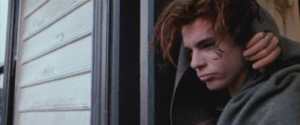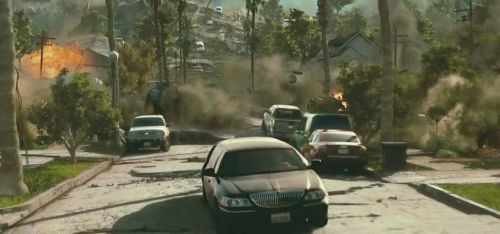 Dogs in Space (Richard Lowenstein, 1986) and
Dogs in Space (Richard Lowenstein, 1986) and
We’re Livin’ on Dog Food (Richard Lowenstein, 2009) and
He Died With a Felafel in His Hand (Richard Lowenstein, 2001)
Movies are time capsules. Inner city suburbs of Melbourne such as Fitzroy, Brunswick, Carlton, Richmond, St. Kilda and Collingwood are now largely gentrified, filled with young professionals and with only a modicum of their former grunginess preserved; much of the shabbiness that remains – pokey cafes, tatty pubs – is artfully preserved to maintain an inner city chic. Yet the older, scruffier inner Melbourne is still there in all its glory in films like The Club, Malcolm, Death in Brunswick and Monkey Grip. Amongst this group, no film stands as deliberately as a time capsule of a place and an era as Richard Lowenstein’s cult classic Dogs in Space, from 1986, which has now been released on DVD after playing at the 2009 Melbourne International Film Festival.
The film chronicles life in a Richmond share house in the late 1970s, centering on the spaced-out musician Sam (Michael Hutchence) and his easygoing girlfriend Anna (Saskia Post). Virtually plotless, it depicts the parties and conflicts in and around the house as various different subcultures (punks, hippies, and one unfortunate uni student) co-exist. Many of the housemates are in underground punk bands, and the film was inspired by real-life events in the Melbourne post-punk music scene. As Lowenstein’s subsequent documentary We’re Livin’ on Dog Food (which also played at the festival and which is included on the Dogs in Space DVD) makes clear, the timing of Dogs in Space was at once far enough away from the real events that it already had a nostalgic air, and yet close enough that the film could get a documentary-like feel through the participation of some of the real people and bands.
Continue reading →


